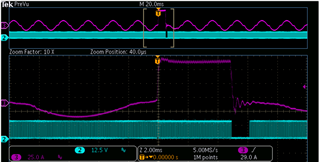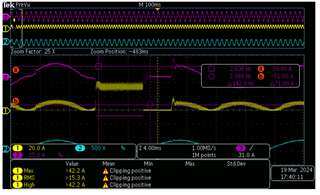Hi Sir,
At present, I use your UCC28070 chip to make PFC product.
When the power reaches above 3.6kW, the input current waveform is abnormal in a certain period, and the other periods are normal.
Abnormal current flow is very random, as follows.
Any ideas on how they can improve this?
 Ch2:Vgs; Ch3: Input current
Ch2:Vgs; Ch3: Input current
 Ch1: Inductor current; Ch2: Input Voltage; Ch3:Input current
Ch1: Inductor current; Ch2: Input Voltage; Ch3:Input current
Thanks.

